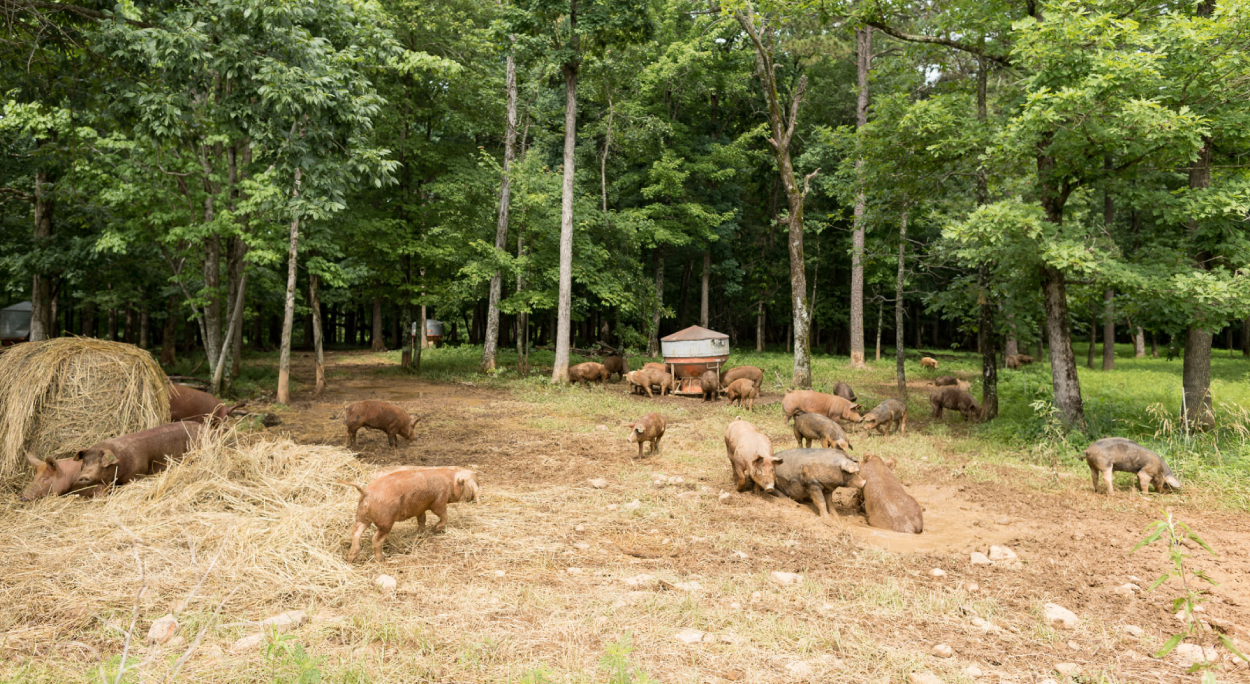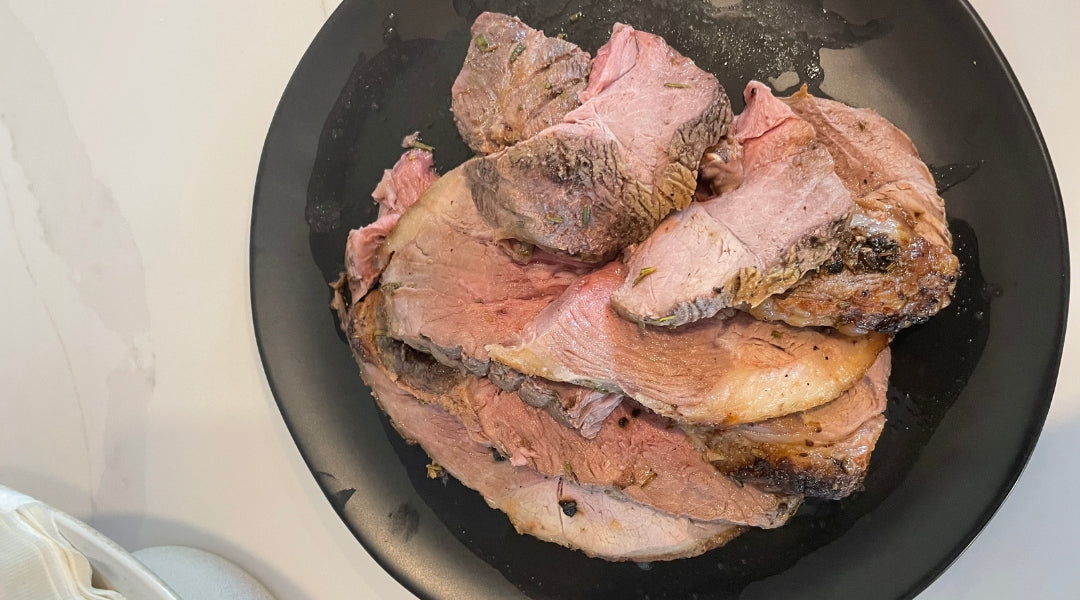Humanely Handled Meat: Ethical Farm Animal Care & Harvesting

We’ve written before about the higher nutritional benefits of grass-fed meat, and the many positive environmental benefits of pasture-raised meat.
However, eating meat from pastured farms provides another substantial advantage for conscientious meat eaters: The animal welfare practices of humanely raised meat.
As responsible consumers who want to coexist harmoniously with nature instead of dominating and depleting it, we believe in humane farm animal care and humane harvesting.
Keep reading to understand:
- What is humane meat?
- How does Grass Roots practice humane farm animal care?
- What does humane harvest mean?
What is humane meat?
The term "humane meat" is used to refer to meat that has been produced with high regard for animal well-being.
The intent is to maximize animal comfort by creating conditions that are as natural and respectful as possible.
Unlike factory farms that are widely known for fairly low animal care standards, humane meat production considers animal well-being throughout every phase of an animal's life and harvesting. The higher animal welfare standards of humanely-raised meat typically involve:
1. Stress reduction
Day-to-day farm operations are modified to minimize stress and fear in the animals, including:
- More human handling vs machine handling
- Farm workers are trained to handle animals calmly
- Loud noises or sudden movements that could frighten animals are reduced or eliminated.
2. Natural living conditions
Animals thrive when they're allowed to carry out their instinctive behaviors, just as they would in their natural habitat. This means they have access to their natural diet, outdoor grazing, sunlight, and (if needed) appropriate shelter.
Note: “Free range" meat is often not the same thing as humane meat. Most free range operations keep animals indoors for the bulk of their lives and only permit short periods of outdoor time.
3. No added hormones or antibiotics
Growth hormones that alter an animal’s natural biochemistry can result in physiological changes that cause discomfort and exacerbate their stress response.
Similarly, antibiotics are typically only required when animals are fed an unnatural diet.
For example, cattle are ruminants designed to digest fibrous plant materials, which is why a diet high in grains (a much cheaper food source) often causes serious digestive problems that are treated with antibiotics.
Learn more about why we never feed animals grain or grain by-products, and the numerous benefits of eating only grass-fed and grass-finished beef.
Grass Roots animals are never treated with antibiotics or synthetic hormones.
Keep in mind that humane meat does not always equal hormone-free meat.
Some producers label their meat as “humane” even if they treat their animals with antibiotics or synthetic hormones, so never assume that one equals the other.
If eating meat that was never treated with antibiotics or added hormones is important to you, choose a meat source that clearly states their policy on hormones and antibiotics.

4. Humane harvesting
Efforts are made to make the harvest process as painless and stress-free as possible. The success of these efforts is greatly influenced by the volume of animals being processed. Keep reading for our small batch policy below.
5. Transparency and labeling
Humane meat producers often provide clear labeling to inform consumers about their practices. This allows consumers to make informed choices based on their ethical values.
How does Grass Roots practice humane farm animal care?
A core belief that underpins everything we do here at Grass Roots Farmers Co-Op is that animals should be allowed to be animals.
Containing cattle who are biologically primed to roam fields, or pigs whose instinct is to root and wallow in woods and forests, opposes natural conditions.
Responsible meat consumption includes creating the conditions for the animals that nourish us to exist as their species would in their natural habitat.

We do our best to replicate species-specific ideal conditions as much as possible by relying on the following principles:
1. Hand raising supports 1:1 animal handling
Our farm animals are raised in very small batches, as compared to any industry standard. This allows for a much higher quality of care because farmers are able to give more attention to individual animals.
Unlike large factory farming operations that raise and process animals in large volumes to generate the highest possible profits, our small batch approach gives our farmers more time with each animal, which improves their comfort and minimizes stress levels.
It’s also exponentially safer for our farmers. Learn why grass-fed beef is better for farm workers’ safety.
2. Animal handling should always consider animal well-being
Every member of our co-op of rural American farms is committed to a high level of care when collecting and loading animals for transport.
For example, in most commercial chicken houses, chickens are often collected 10 at a time. This is a chaotic and stressful experience for them.
Conversely, our Grass Roots farmers pick up each chicken one at a time and place them carefully in their transportation crate.
To some, this is a small detail. To us, every interaction with an animal should be as kind as possible.

3. Small batches support a more humane harvesting process.
All Grass Roots animals are harvested at small processing facilities that offer more attention to each animal than commercial processing plants provide.
Raising and processing meat in smaller volumes allows for a more thoughtful harvesting process.
Humane harvest
In 1958, the United States passed the Humane Methods of Slaughter Act. This federal law is designed to reduce livestock suffering during harvest.
However, this act does not require a minimum number of personnel per animal.
The number of people available to support the harvesting process is often the most important factor in creating as much animal comfort as possible.
This is why Grass Roots raises and harvests animals in small batches, and only uses facilities that assign a higher percentage of processing workers to each animal.
Raising and harvesting animals with great care matters to us. A lot.
Learn how we humanely raise regeneratively-farmed beef
- What is regenerative agriculture?
- How do the environmental benefits of regenerative farming also support humane animal handling?
- Is humanely-raised meat more nutritious?
- And more!
Learn the 6 characteristics of regeneratively-raised beef.
Recent Posts



 Tender and succulent, it's the perfect centerpiece for any holiday feast, elevating your meal with its exquisite taste and elegant presentation. Delight your guests with this sophisticated dish, sure to leave them craving more of its indulgent perfection.
Tender and succulent, it's the perfect centerpiece for any holiday feast, elevating your meal with its exquisite taste and elegant presentation. Delight your guests with this sophisticated dish, sure to leave them craving more of its indulgent perfection.



